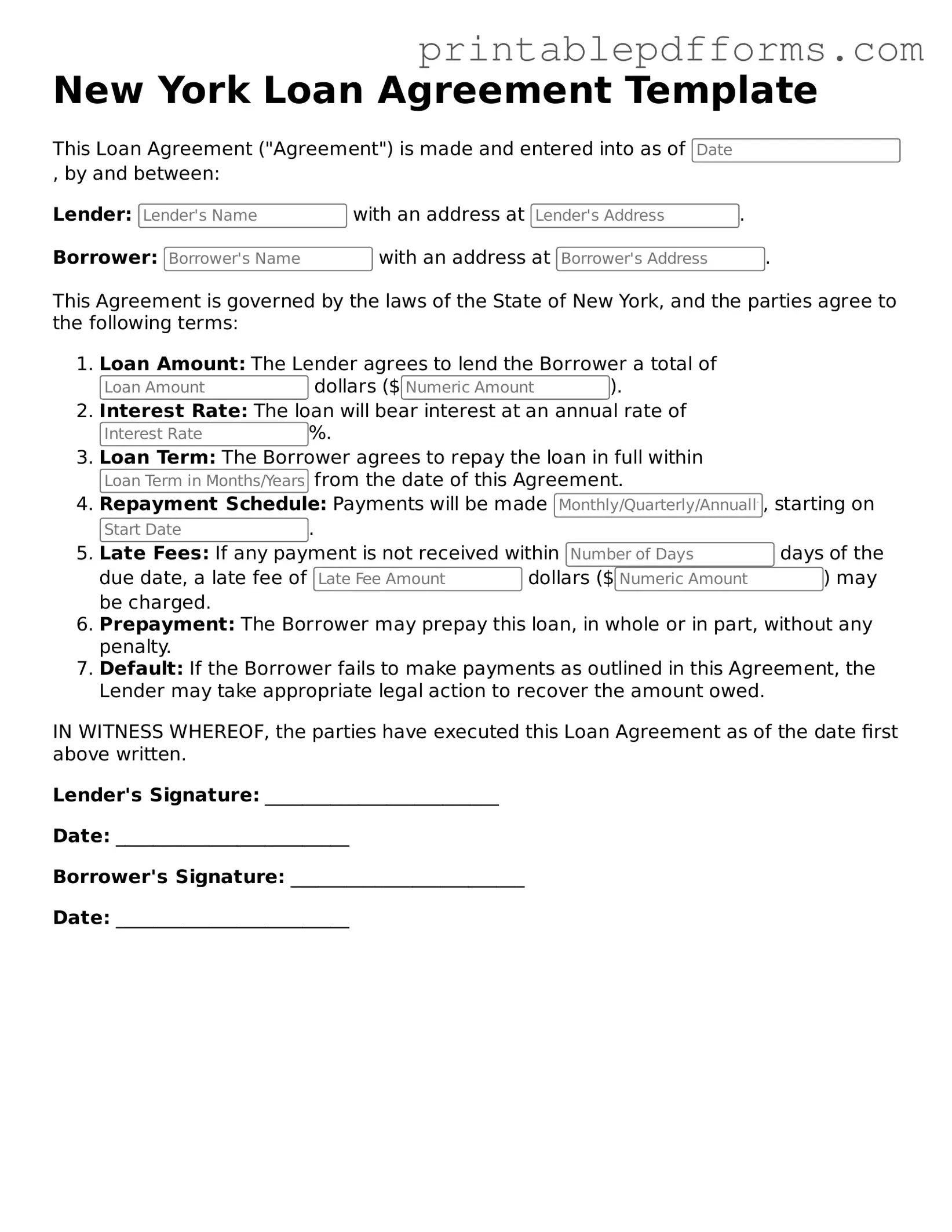New York Loan Agreement Document
A New York Loan Agreement form is a legal document that outlines the terms and conditions of a loan between a borrower and a lender. This form serves to protect both parties by clearly detailing the responsibilities, repayment schedule, and interest rates associated with the loan. To ensure a smooth borrowing process, consider filling out the form by clicking the button below.
Create This Document Online
